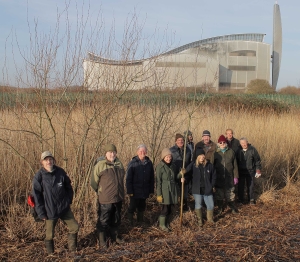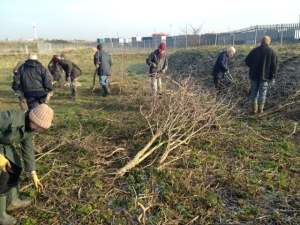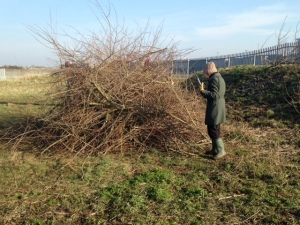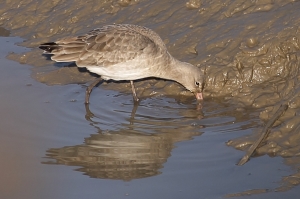There was a good turnout at Crossness today (Jan 23rd) on a frosty, but sunny and largely wind-chill-free morning, in order to take some willows out of the protected area scrape reedbed, so as to prevent it becoming Willow carr. Site Manager Karen Sutton’s regular helpers chain-sawed the young trees whilst the rest of the group dragged them away and cut and piled up the branches, saving thicker material for use as stakes on other projects.
Prior to removal the willows were checked from the egg-laying scars of the Willow Emerald Damselfly, a recent colonist of the UK in around 2007, and still largely confined to East Anglia where it was first found, but it is spreading and occurred at Rainham (Essex) and Redhill (Surrey) in 2014. None were located. Maybe next year?
The tide was coming in up at the sea wall after the event, and there were numerous Lapwing on the mud, Dunlin running around, Shelduck and flotillas of Teal, Gadwall, Wigeon, Shoveler, Black-headed Gulls, a few Cormorant and a single bird each of Grey Heron and Black-tailed Godwit.
The next Crossness events are 11th and 27th February (see BW calendar page). Volunteers old and new will receive a warm welcome.




